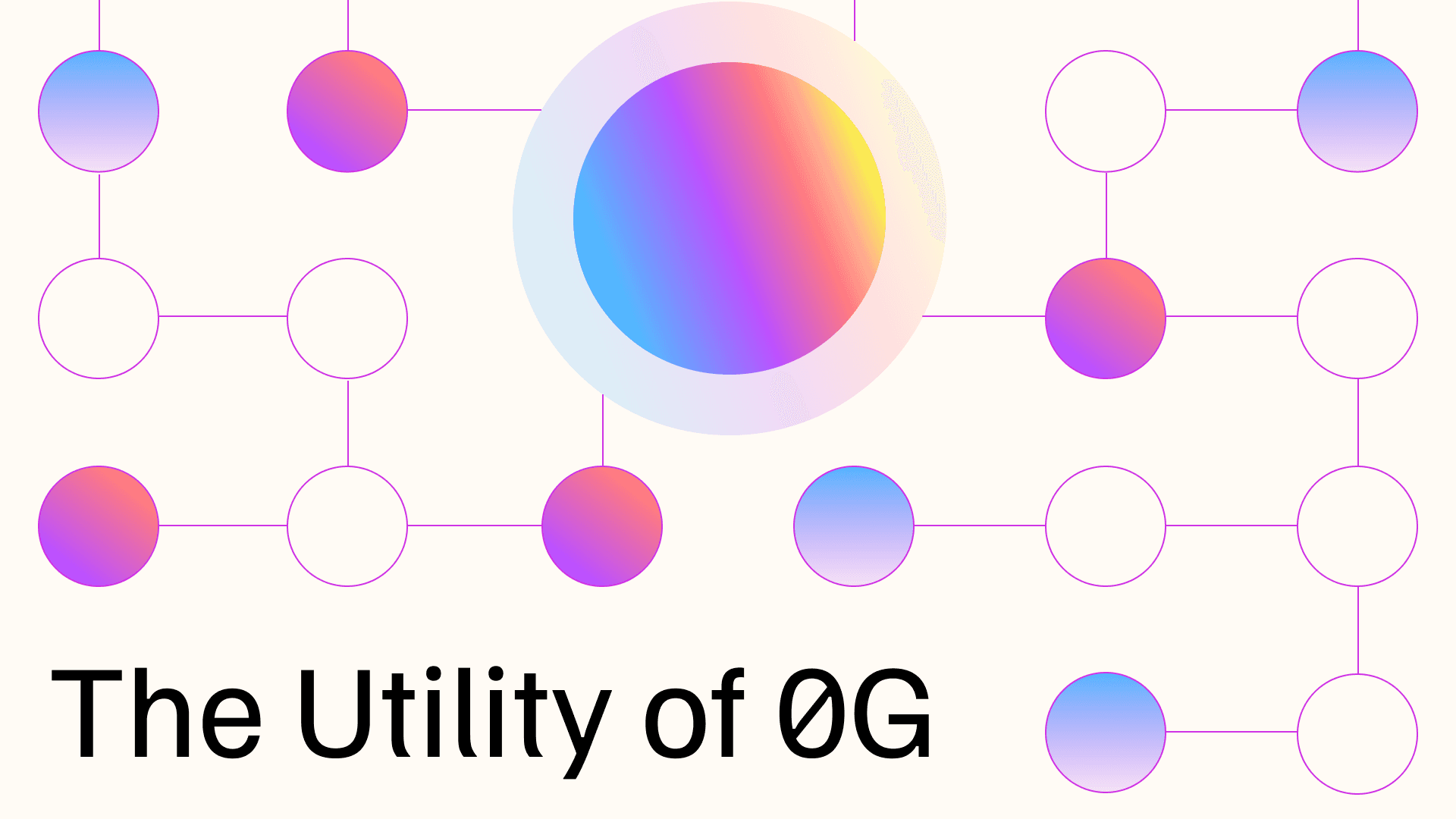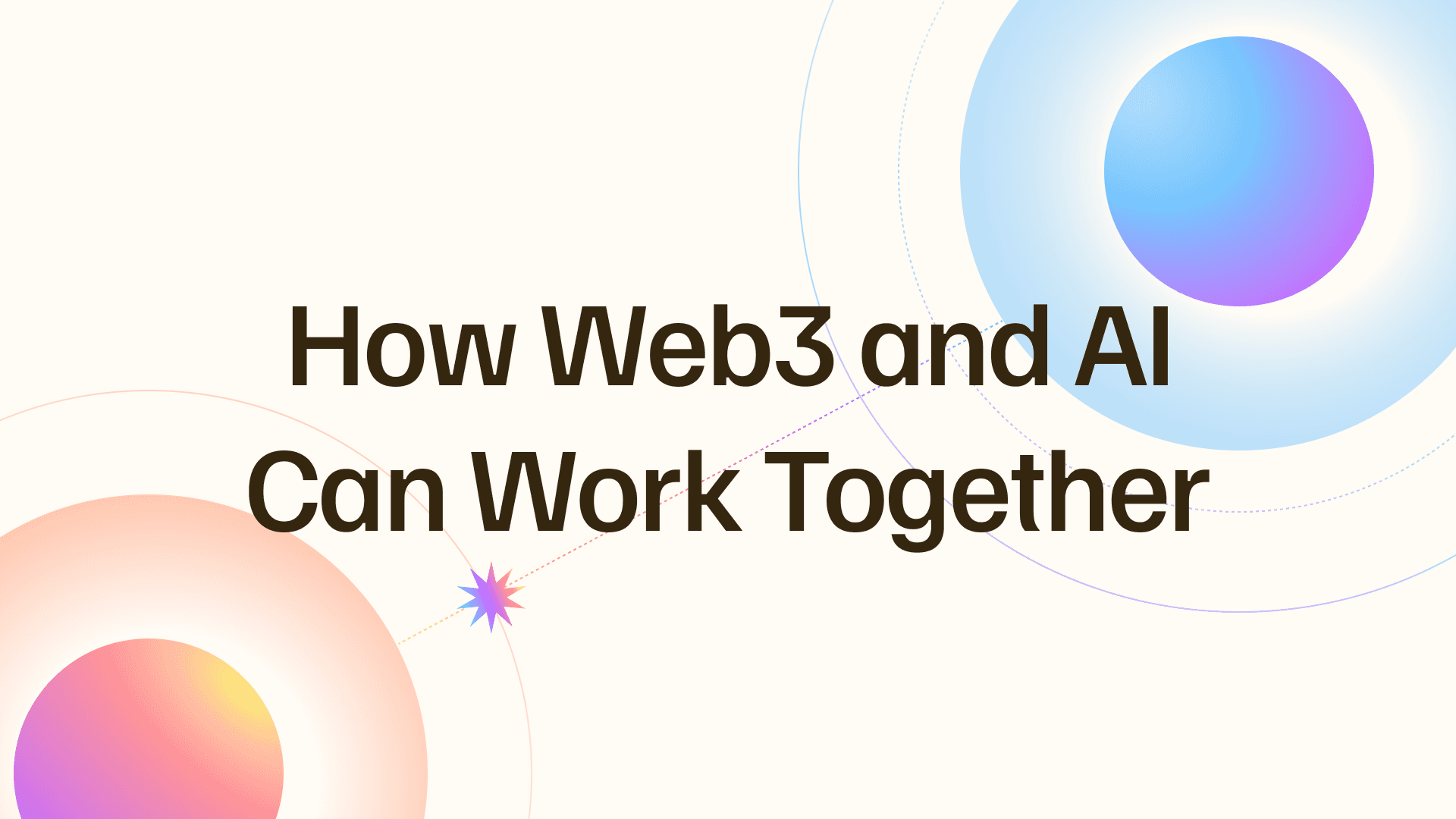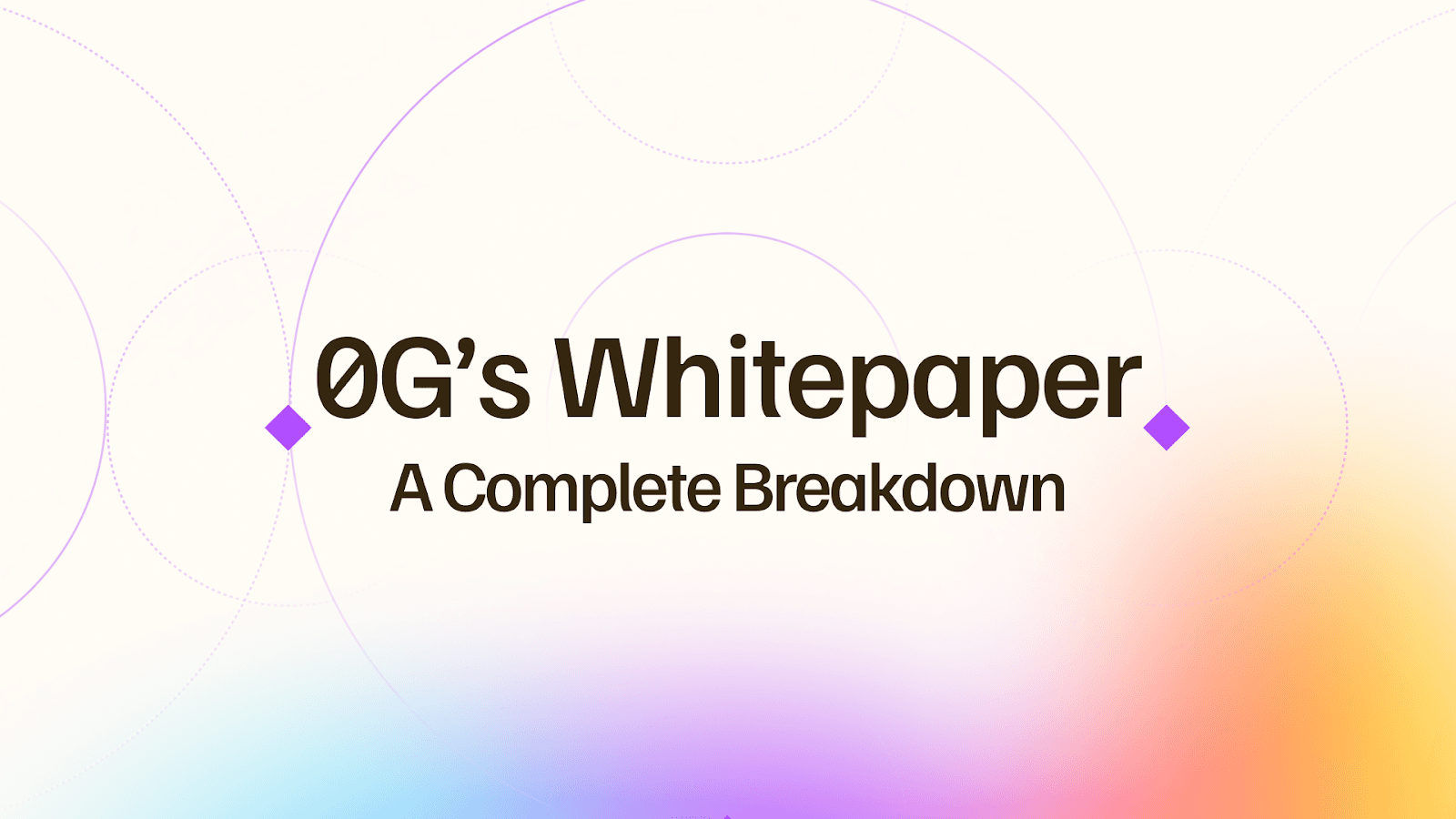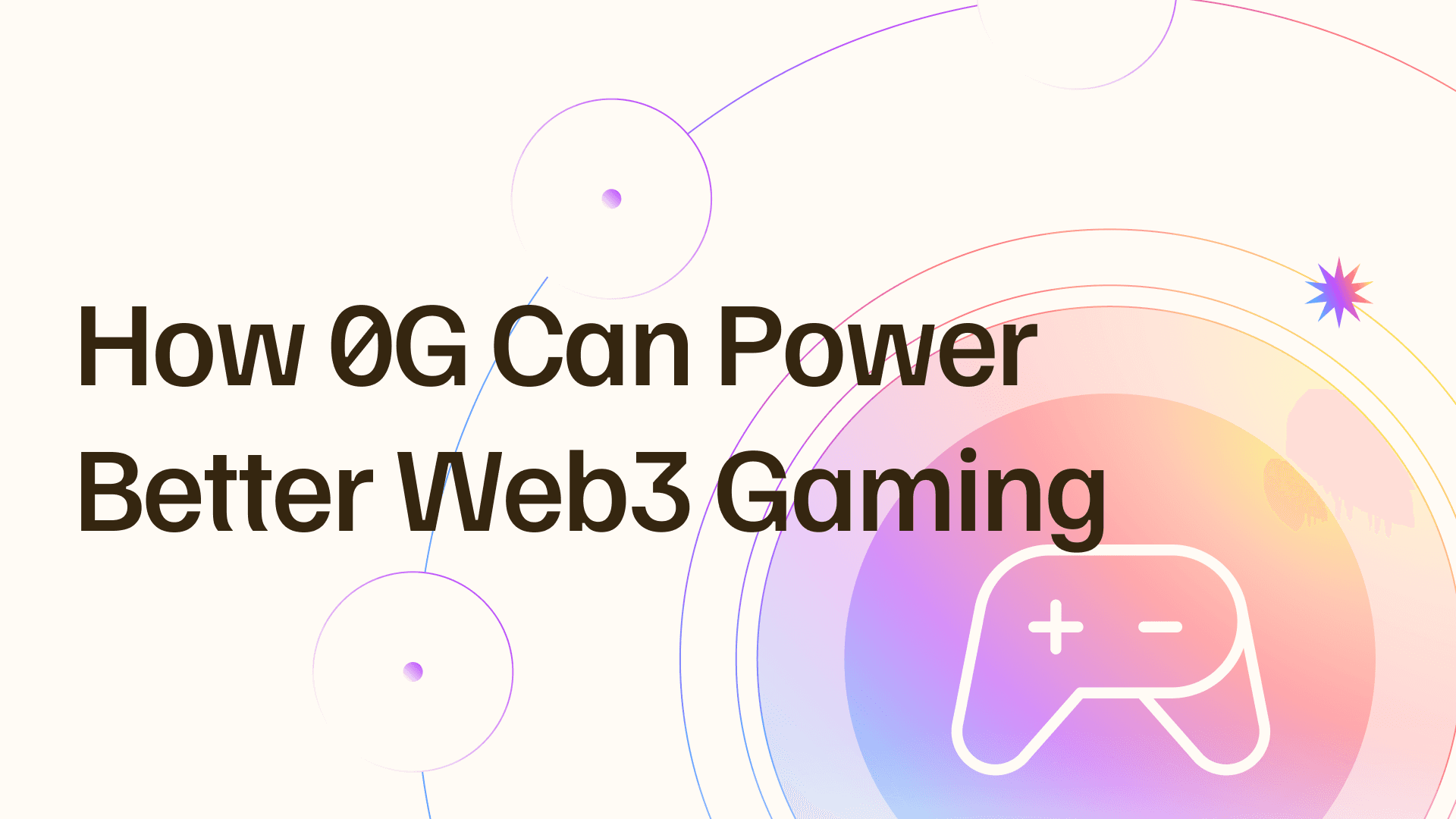
Back

0g
May 8, 2024
Introduction
0G is an infinitely scalable data availability layer and data storage system that provides the necessary infrastructure to scale Web3 and bring novel use cases on-chain.
With the volume and variety of on-chain data growing exponentially, it is becoming increasingly challenging to work with.
0G provides a massively scalable data storage solution that serves a wide variety of use cases. In particular, it supports high-performance applications such as Crypto AI which must currently store and process data off-chain. At the same time, blockchains can use 0G for purposes such as state offloading, while also using 0G as a data availability layer for security purposes.
In this article, we’ll break down 0G’s role in shaping the future of Web3, and make it clear why our $35M pre-seed round was just the beginning.
The Role of a DA Layer
Before diving into the specifics, it’s important to provide a brief overview of 0G, which we covered in greater depth in our recent blog post.
This design is split into 2 components:
The Storage Network (0G Storage): A general data storage system for structured or unstructured data.
The Data Availability Network (0G DA): A DA Layer built on top of 0G Storage, responsible for guaranteeing DA for each data block.
Data Availability Layers (DALs) provide an efficient yet secure manner to publish data and to keep it available for anyone to verify. For example, Layer 2 rollups publish data that must be kept available, proving that the off-chain transactions were done correctly. Without a highly performant DAL, a) high-performance dApps cannot be built, b) use cases like on-chain AI are limited, and c) validators may struggle to store an increasing amount of data.
However, existing DALs are not sufficiently scalable, restricted by their throughput and potential data storage. 0G goes a step further than them by introducing 0G Storage. This storage system provides database infrastructure for other projects or networks to leverage, and it interacts with 0G DA to efficiently prove that data exists.
0G’s infinite scalability is possible via data partitioning, as well as through the ability to introduce any arbitrary number of separate consensus networks in a process known as shared staking.
0G’s Utility
Now that we have a core understanding of both 0G Storage and 0G DA, it’s important to understand that these enable highly performant use cases to arrive on-chain.
Primarily, 0G is focused on enabling on-chain AI. It has the infrastructure to store the vast amounts and types of data required for AI modeling, and can directly integrate with a wide range of applications and networks. This means that datasets can be stored on 0G and have interactive AI models built on top of them that seamlessly connect to any connected network.
The benefits go beyond this and can be summarized as:
Access to On-chain AI Models
Not only can any AI model be launched on 0G, but they can interact with any other model or dataset in the 0G ecosystem. For example, our partner Pond is building Graph Neural Networks (GNNs) on 0G, which can in turn be combined with externally-created models or datasets.
To see this in action, imagine market makers or DeFi protocols using relevant on-chain AI-models to predict and optimize liquidity flow. Additionally, certain models could be used for on-chain recommendation engines based on one’s transaction history, even incorporating data from their Web2 actions.
Data Storage
Storing data at the traditional network level can be not only slow and expensive, but lead to network congestion. Any party may use 0G to store any type of structured or unstructured data, even building applications that use 0G as database infrastructure.
For example, AI models, applications with significant data needs (e.g. Web3 gaming), or RWA meta-data (such as land titles) could all rely on 0G. Alternatively, networks could offload state to 0G, reducing the burden on validators and improving block production efficiency.
Data Availability
0G DA is built on top of 0G Storage, and relies upon a quorum of data availability nodes (with an honest majority assumption) to efficiently prove that the data truly exists.
The primary use case for this is having Layer 2s and Layer 3s publish data to 0G in a cost-efficient manner, which in turn allows any project in their ecosystems to tap into 0G’s data storage or AI models.
Who can benefit from the above? Many different parties:
Data Availability: Layer 2s and Layer 3s may use 0G for data availability confirmation.
L1s / L2s: These parties may use 0G’s AI models, or use 0G for data availability and storage. Partners include Polygon, Arbitrum, Fuel, Manta Network, and more.
Decentralized Shared Sequencers: Sequencers pick up Layer 2 transactions and verify/order them, allowing them to be sent to Ethereum. Shared sequencers allow for multiple rollups to share a single decentralized network of sequencers, and can use 0G for efficient data storage and integration with DA solutions.
Bridges: Given that networks can easily store their state using 0G, state migration is possible between networks which facilitates secure cross-chain transfers.
Rollups-as-a-Service (RaaS): a DA option and data storage infrastructure for RaaS providers like Caldera and AltLayer.
DeFi: 0G’s quick and scalable DA may support highly efficient DeFi on specific L2s & L3s, due to fast settlement and storage.
On-chain Gaming: Gaming requires vast amounts of cryptographic proof-related data that needs to be reliably stored, on top of all regular metadata such as a given player’s assets, points, actions, and more.
Data Markets: It makes the most sense that Web3 data markets truly store their data on-chain, which is currently only feasible on a large scale using 0G.
As well, certain areas of blockchain technology can combine with 0G to provide improved rollup services.
For example, shared sequencers allow for multiple rollups to share a single decentralized network of sequencers, and can use 0G to improve rollup services via efficient data storage and DA integration.
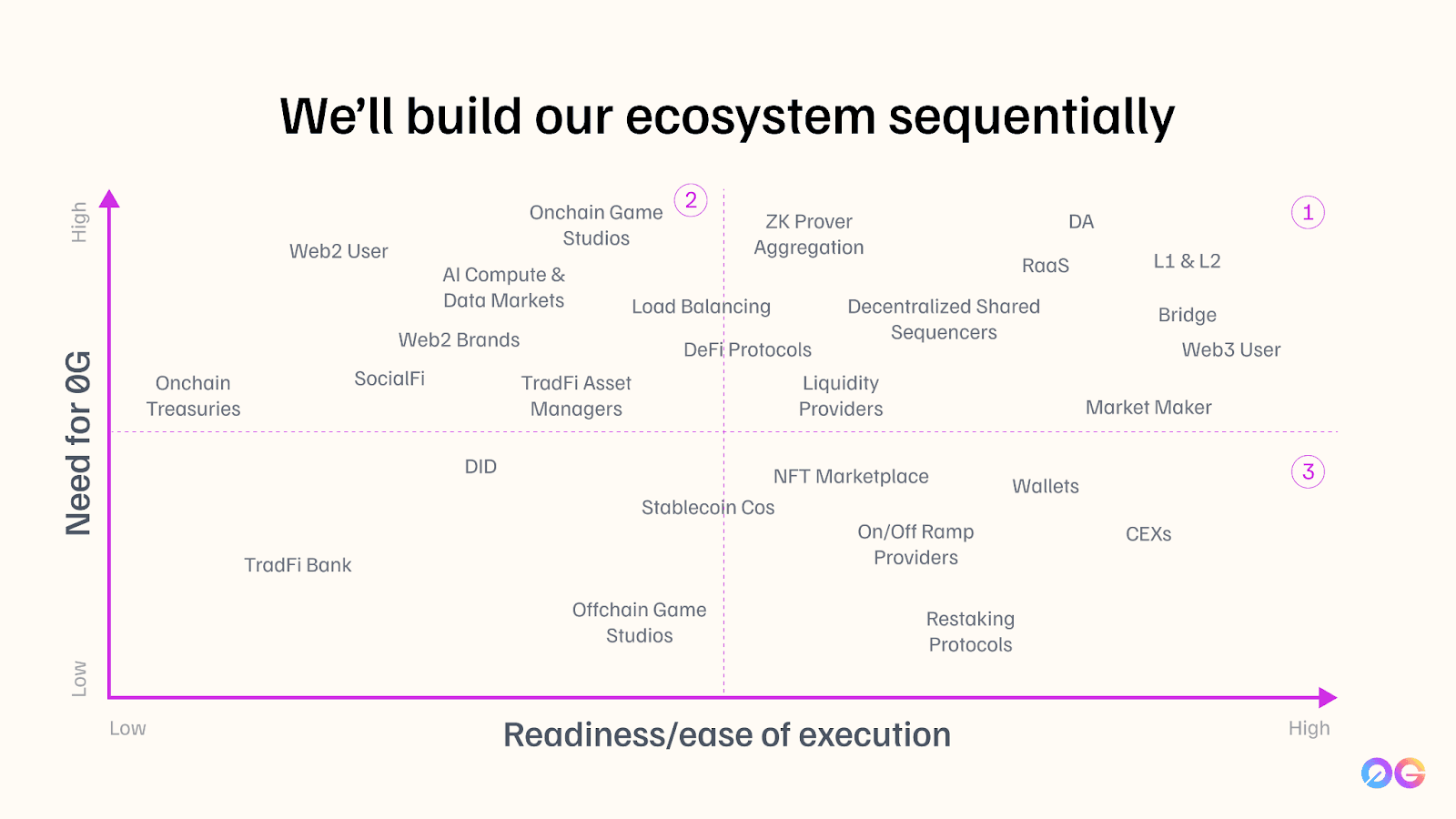
We are busy integrating with these parties, beginning with those that have a high need for 0G, and are easier to integrate with.
Conclusion
In conclusion, 0G is busy building out data storage and data availability solutions that can serve Web3 on a scale previously unimaginable. This will serve as core infrastructure for a wide spectrum of Web3 verticals, and our recently announced testnet Newton lays out the groundwork to make this a reality.
To follow along, visit https://0g.ai/ or follow us on Twitter.
Sign up for our newsletter
